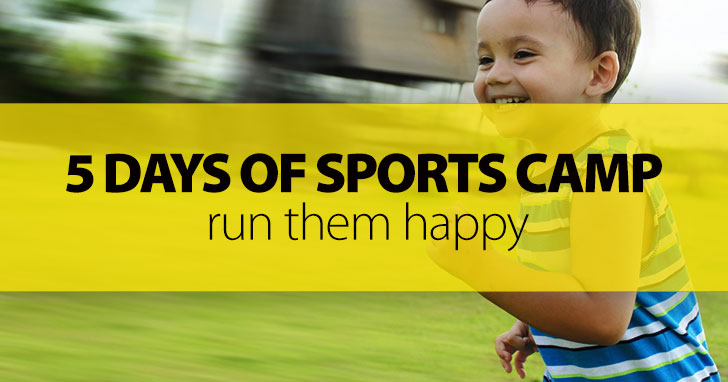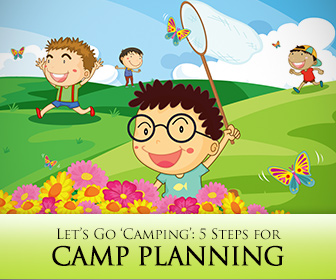Run Them Happy: 5 Days of Sports Camp


Expectations are usually vague: ‘do something fun with the kids,’ ‘focus on speaking and using English,’ and nobody tells you how to go about actually making that happen. Well, the trick is to have a system. Here’s one that I have found very effective.

Now, not every camp needs to be based around a theme. I have heard of some great camps where the only thing connecting the activities was the fact that they needed English. However, having a theme will make your life easier. Having a theme also means you can choose vocabulary and language that builds throughout the camp. Knowing that you can rely on all students having been exposed to the same terminology later in the camp can open up more time for activities and speaking practice, instead of vocabulary lessons.
When choosing a theme you should opt for something that you love and that is relevant to your students’ lives. By the time camp rolls around you should have a good idea of the sort of things your students enjoy. Try to include some of those things in your camp theme to get the students excited about the camp. A few ideas are: science camp, sports camp, travel camp, global cultures camp, movie camp (make your own movie), animation camp, computer camp, or leadership camp. Most of these themes can contain a wide variety of activities that can be altered to fit nearly any level.
Before getting into the details of your camp you need to get an idea of what options you have available. If possible, find out what the English ability of the students is going to be. Are they practically fluent or can they barely respond to ‘how are you?’ How many students will be attending camp? These two questions will largely determine what activities are realistic. Once you have an idea about your levels and numbers, you need to determine what space and resources are available to you. Sometimes the details of these questions need to come after step three, but determine the general parameters ahead of selecting the activities.
The answers to all of these questions will shape your activity options even further. Unfortunately, at the end of the day you may have to ask yourself the question: am I willing to pay for some of the materials and prizes myself?
Activities are the bones of your camp: everything hangs off of them. The best part is that you have lots of time, at least compared to normal classes, to do really cool activities. Now, you’ve got your theme (which you are excited about), you know a bit about your students, and you’ve got an idea of the resources at your disposal. When you think of the theme and the materials, what is the first thing that pops into your head? For example, when I think ‘sports camp,’ ultimate frisbee comes slamming into the forefront of my brain. In this case it works as a concept because the kids enjoy it and it can be as easy or hard as you want it to be. If I thought ‘American football’ I may have to try again because that is a pretty complex game to teach in five days. Jot down your ideas and then start working out how you would teach them to the students. It’s possible you will have a separate topic for each day, or, that you will focus on one topic that becomes increasingly complex as camp progresses. Both are good. Decide which activities you want to do each day, list them, and move on to step four.
Once you have an activity selected for each day, you need to start filling in the details. Camps usually run for half a day and are broken into four periods (see planning table below). This is helpful for planning, as you usually want the first period to be warm-up activities and teaching time, the second to be some sort of practice, and the third and fourth to be activity time. Alternatively, the second and third can be activity time and the fourth can be clean up and wind down; it will depend on the complexity of the language and activity you have selected. Identify the terminology and language that will be needed for each activity. Remember that this is an English camp and the students need to be learning and using English. Make a materials list for each day. What will you need? Where can you get it? Complete the planning table using bullet points so you have a constant reference for what is coming next during camp. It’s easy to forget things otherwise.
This is pretty self-explanatory. Once you have determined what you will need, acquire it all beforehand. Make your presentations and visual aids before camp starts. You are going to be very busy during camp, even if you will be having fun, so this stuff needs to be done ahead of time. Basically, once this step is completed you are ready for your camp.

But they are also a lot of fun and let teachers interact with their students in a different setting. Because these groups are usually smaller, the teacher has a chance to build really strong relationships with these students which will continue throughout the year. Planning the camp can seem daunting, but if you follow these steps you should have a solid structure to work with. Good luck and have fun.
| Date | Date | Date | Date | Date |
|
|---|---|---|---|---|---|
| Period 1 9:00-9:45 |
|||||
| Period 2 9:55-10:40 |
|||||
| Period 3 10:55-11:40 |
|||||
| Period 4 11:50-12:35 |
|||||
| Materials |